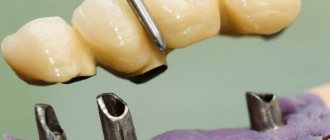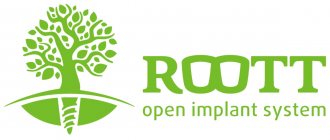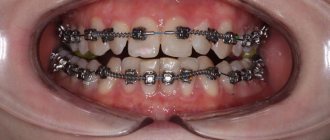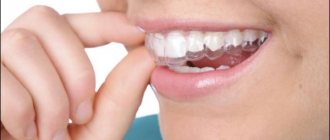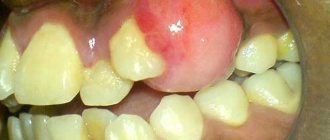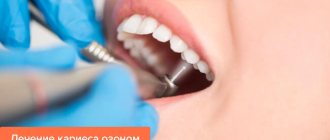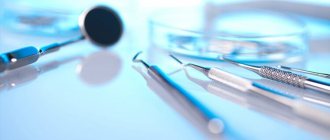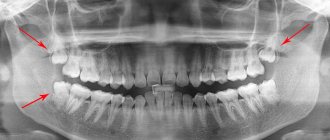The weakening of the crystal lattice of tooth enamel, caused by the loss of mineral compounds, contributes to the development of destructive processes in it.
The use of remineralizing therapy methods in the initial stages of the disease helps prevent the formation of a carious cavity in 70-80% of patients. An innovative method for treating caries in the early stages of development is the use of Icon materials.
Application of Icon technology in dentistry
The development of the carious process occurs in several stages.
The initial stage of the disease is the formation of superficial caries, which is characterized by a violation of the integrity of the crystal lattice of tooth enamel and the formation of areas of destruction in it. In this case, there are no changes in dentin.
The initiation of pathological processes is indicated by the periodic occurrence in patients of a feeling of soreness as a result of exposure to chemical and thermal irritants.
When probing the surface of the causative tooth, the dentist identifies a rough area - a shallow defect in the enamel that does not extend beyond its boundaries.
It is impossible to independently identify the development of the carious process. Thinning of the enamel and the formation of depigmented areas on it are also characterized by other dental pathologies - enamel hypoplasia, erosion of hard dental tissues and wedge-shaped defect. Only a dentist can differentiate these diseases.
Treatment of caries using the ICON method
At the initial stage of development of the carious process (white spot stage), non-invasive therapeutic measures are carried out for therapeutic purposes:
- Remineralizing therapy is the creation of conditions in the oral cavity to strengthen the crystal lattice of tooth enamel. The therapeutic effect is achieved through professional teeth cleaning followed by the use of fluoride-containing varnishes and solutions.
- Impregnation treatment methods are the impregnation of damaged areas of tooth enamel with a solution of silver nitrate or Icon materials in order to create aseptic conditions in them. After the treatment procedure, the demineralized areas of the enamel are protected from putrefactive decay for a long time.
An absolutely innovative way to treat caries is the microinvasive technique Infiltration Concept, abbreviated as Icon. The literal translation of the name of this method – “infiltration concept” – reflects the principle of therapeutic effects on the affected areas of tooth enamel. During the procedure, the dentist applies a polymer composition (infiltrant) to the areas of demineralization, which fills the pore system in the pathological area, thereby sealing the carious cavity, preventing the proliferation of microorganisms in it.
The effectiveness of treating caries using the infiltration method (without using a drill) has been confirmed by numerous clinical studies. At the same time, the treatment technique complies with modern healthcare standards - during its implementation, the dentist’s impact on healthy tooth tissue is minimized.
Composition of the dental system
On the pharmaceutical market, Icon polymer materials are presented in two versions:
- Icon Kariesinfiltrant - approximal (Icon Karies infiltrant - approximal surfaces) - a set of materials necessary for the treatment of the initial stage of caries on proximal (contact with adjacent teeth) surfaces.
- Icon Kariesinfiltrant - vestibular (Icon Karies Infiltrant - smooth surfaces) - a set of materials intended for the treatment of caries in the spot stage on vestibular (facing the cheeks and lips) surfaces.
Each Icon kit contains the materials needed to complete the treatment step-by-step:
- Icon-Etch is a special gel designed for chemical etching of tooth tissue. It consists of hydrochloric and pyrogenic silicic acids, surfactants. An etching gel is used to remove the pseudo-intact layer of enamel in order to facilitate the penetration of the infiltrant into the pore system of the pathological lesion.
- Icon-Dry is 99 percent ethanol. Used to thoroughly dry the surface being treated.
- Icon-Infiltrant is a low viscosity solution containing a methacrylate resin matrix, polymerization initiators and additives. The infiltrant penetrates the affected tooth tissue due to the capillary effect and hardens under the influence of light rays of a certain length.
The Icon Kariesinfiltrant – approximal kit includes:
- 0.3 ml Etch liquid (1 syringe);
- 0.45 ml of Dry liquid (1 syringe);
- 0.45 ml of Infiltrant liquid (1 syringe);
- Accessories – 4 separating wedges for teeth separation, 6 approximal attachments, 1 Luer Lock attachment.
The Icon Kariesinfiltrant – vestibular kit includes:
- 1 syringe Icon-Etch – 0.45 ml of gel;
- 1 syringe Icon-Dry – 0.45 ml of liquid;
- 1 syringe Icon-Infiltrant – 0.45 ml of liquid;
- accessories – 6 vestibular attachments, 1 Luer Lock attachment.
If Icon materials come into contact with the mucous membranes of the oral cavity, a chemical burn may occur. To prevent this complication, the dentist installs a rubber dam in the patient’s mouth before performing the treatment procedure.
Prevention
Caries in children is much easier to prevent than to cure. Preventative measures include ensuring the child has a high level of oral hygiene, and limiting carbohydrate intake . The baby's diet should contain a sufficient amount of foods high in calcium.
Since one of the reasons for the development of the disease is the low fluoride content in drinking water, the use of children's toothpastes that contain this microelement is strongly recommended.
You should visit the dentist at least 2 times a year. Detecting caries in the early stages will allow you to limit yourself to conservative treatment, which will save the baby from stress and parents from unnecessary financial costs.
Plisov Vladimir, dentist, medical columnist
4, total, today
( 51 votes, average: 4.31 out of 5)
Seizures: causes and treatment
Complications after tooth extraction
Related Posts
Advantages and disadvantages of caries treatment
The superiority of using the Icon technique in comparison with other methods of treating superficial caries is due to the following:
- no need for anesthesia and preparation of the causative tooth;
- minimal impact on healthy tooth tissue;
- safety and ease of performing the treatment procedure;
- preservation of the anatomical shape of the tooth;
- speed of performing therapeutic manipulations (20-25 minutes);
- no visual difference between the area treated with Icon materials and the surface of other teeth;
- the possibility of using materials in patients of various age groups, including children with baby teeth and pregnant women.
Before and after treatment
In vitro (experimental) studies have confirmed the admissibility of treating even areas of depigmentation of non-carious origin (fluorosis or trauma to the tooth crown) using Icon materials. In the near future, the developers of this treatment technique expect to receive the results of clinical studies confirming such possibilities.
Disadvantages of Icon technology:
- the technique can be used only in cases where the pathological area is located within the enamel;
- high cost of the procedure;
- increased requirements for dentist qualifications, the need for preliminary training in this technology.
Since the technique is innovative, treatment of superficial caries using Icon materials is not carried out in all dental clinics.
Disadvantages icon
Only initial dental caries can be successfully treated with the ICON method. The deeper the source of destruction, the lower the effectiveness of the procedure.
To determine the depth of damage in the interdental spaces, a preliminary x-ray examination is required, which is excluded when treating children and pregnant women (the potential harm in this case “outweighs” the risks associated with caries).
Reference. The disadvantages of ICON include the high cost of treatment (2500 - 5000 rubles per tooth). This is due to the initial high price of the material and additional system components.
Instructions for using the Icon system
To carry out the procedure using the Icon system, special equipment is required (rubber dam, air gun, saliva ejector, photopolymer lamp), so it is impossible to perform it yourself at home.
The algorithm for performing the treatment procedure on the vestibular surfaces is as follows:
- The dentist thoroughly cleans the tooth surface from plaque and isolates the working area from saliva using a regular or liquid rubber dam.
- To remove the pseudo-intact layer, Icon-Etch solution is applied to the depigmented area. Exposure – 2 minutes.
- After the etching gel is washed away, the tooth surface is dried with Icon-Dry. If the stain does not become less noticeable after applying ethanol, the dentist re-etches it. The etching gel on the vestibular surfaces can be applied 3 times during one procedure.
- After thoroughly drying the work surface, the dentist applies Icon-Infiltrant to the stain twice and illuminates the material with a photopolymer lamp.
- The final stage of the procedure is polishing the treated tooth surface with soft discs.
Immediately after the procedure, the infiltrated area may differ slightly in color from the adjacent teeth. Over the course of a week, the discoloration gradually disappears.
The algorithm for medical manipulations on approximal surfaces is as follows:
- To confirm the presence of indications for the procedure, the dentist takes an x-ray of the causative tooth.
- Before using Icon materials, the doctor isolates the working surface by installing a rubber dam. To facilitate access to the pathological area, the dentist separates adjacent teeth using separating wedges.
- To remove the intact layer, the depigmented stain is etched with Icon-Etch and then dried with Icon-Dry.
- After this, the dentist applies Icon-Infiltrant to the damaged area of the tooth, after a few minutes removes excess material with floss and photopolymerizes it.
The final stage of the procedure is polishing the treated surface with strips.
Non-invasive treatment
Dentistry is one of the most rapidly developing branches of medicine. Previously, doctors used exclusively invasive treatment methods, which were the main cause of dental phobia, i.e. fear of visiting the dental office.
This fear is dangerous because patients with this phobia put off visiting the dentist until the last moment, which leads to caries and its relapses, chronic gum inflammation, periodontitis and other diseases.
We invite you to familiarize yourself with How to rinse your mouth when you have gum disease: a list of recipes at home and a rating of the best remedies, benefits and indications
Non-invasive methods help overcome this fear, which is why they are actively used in the dental community. Medical in South Butovo uses the most modern methods of caries treatment, which reduce patient discomfort to a minimum. The choice of technique depends on the specific clinical case and the patient’s health condition.
All dentists at the center are recognized professionals with many years of successful practice experience. We managed to assemble a team where every employee is interested in the result and works conscientiously. A list of dentists in our center can be found below.
Contraindications
The Icon Method should not be used in the following cases:
- the patient has hypersensitivity to any of the components included in Icon materials;
- significant depth of carious tooth damage - over one third of dentin (D2 and D3).
To prevent the development of complications in the patient, the dentist, before starting the procedure, takes a thorough medical history and prescribes an X-ray examination of the causative tooth.


